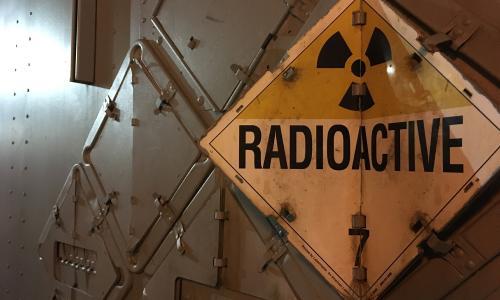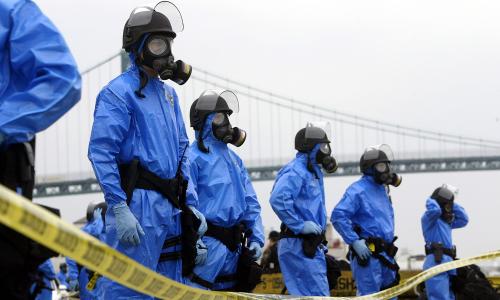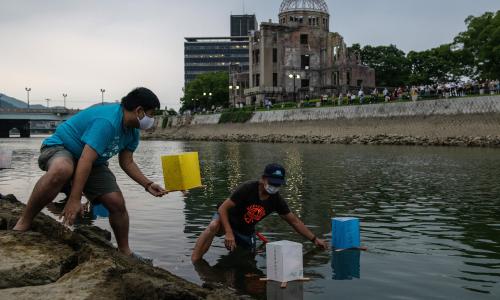What is radiation? Where does it come from? How does it interact with the human body? And what are the health impacts of radiation exposure?
These and other questions are answered in this series of explainers and resources focused on radiation, with an emphasis on materials associated with nuclear weapons. Written and reviewed by experts at the Union of Concerned Scientists and our partners, our intention is to provide people working on arms control and public health a set of tools to inform their advocacy.
Explore the resources below, or read on for background and how to get involved.
Resources

Understanding Radiation

How Radiation Interacts with the Human Body

Where Radiation Comes From

Health Impacts of Radiation Exposure

The Language of Radiation: A Glossary
Background: How radioactive materials harm human health
The mining and processing of the raw materials that go into nuclear weapons; the production, testing, maintenance, and use of those weapons; and accidental or intentional releases of radioactive materials can result in landscapes contaminated by long-lived toxicants—hazardous materials placed in the environment by human sources. These radioactive materials are often human-made (such as plutonium) or intentionally concentrated using industrial processes (such as enriched uranium) for the purpose of building weapons of mass destruction.
Specifically, environments and facilities where uranium and plutonium were produced and processed have become some of the most polluted in the world. For example, the Hanford Site in eastern Washington State is a decommissioned plutonium production facility and a massive Superfund site, and southwestern communities near uranium mines are living with more than 3 billion metric tons of radioactive waste from uranium mining and milling in the modern era.
Additionally, the more than 500 atmospheric nuclear weapons tests conducted globally before such tests were banned in 1963 exposed many people to radioactive fallout, which has left people living with chronic illnesses to this day. A study by the Centers for Disease Control and the National Cancer Institute concluded that any person living in the contiguous United States since 1951 has been exposed to some radioactive fallout.
The nuclear weapon life cycle and its radioactive waste have caused environmental nuclear material exposures in nearly every US state and many territories, on Indigenous land, and at thousands of sites globally including Johnston Atoll, Kiribati, and the Marshall Islands.
In the name of national security, governments have frequently withheld information or lied to the public (and even the US Congress) about what radioactive materials people were exposed to and what the potential health effects could be. Consider a 2023 report revealed that General Leslie Groves, leader of the Manhattan Project that produced the first nuclear weapon, misled Congress by stating under oath that radiation sickness was “a pleasant way to die.”
The Union of Concerned Scientists has worked on nuclear weapons-related issues for more than 50 years. Get involved here.



